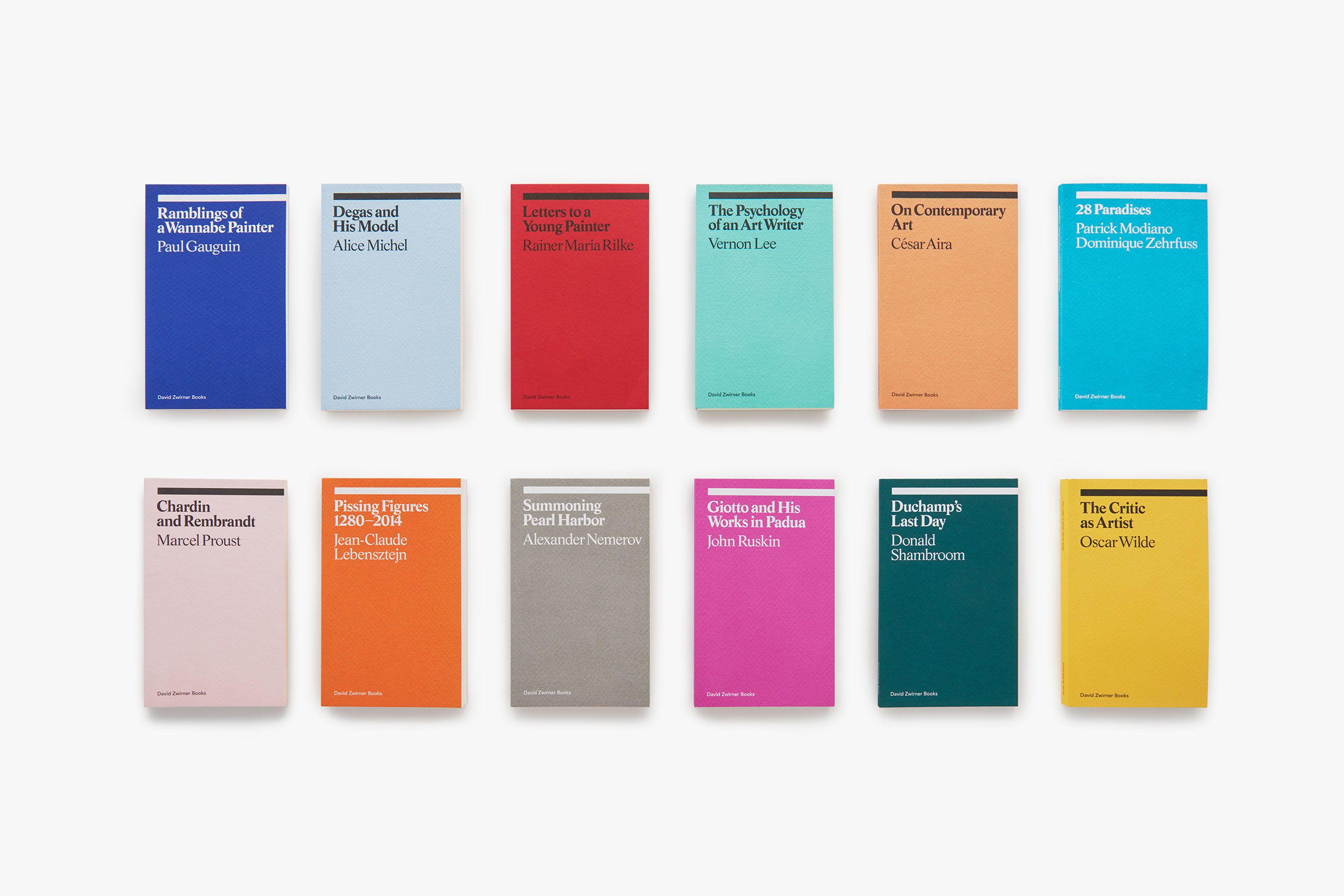Review | ‘ekphrasis’ Series is Charming, Eccentric
Vivifying Approach to Art Criticism

October is National Arts and Humanities Month, which makes it the perfect time for a review of the ekphrasis series published by David Zwirner Books. The series — currently at 14 books and counting — is a combination of newly commissioned works by philosophers, writers, and artists, as well as “overlooked books” from the past. The books’ uniformity of packaging — each is 4 ½ by 7 inches (perfect for stuffing into a back pocket or a purse), with an unadorned single-color cover and standard typeface — belies the diversity of their contents.
The newer works are consistently intelligent and idiosyncratic; one can imagine several of them appearing as long essays in the New Yorker or Artforum. Donald Shambroom’s Duchamp’s Last Day, for instance, catalogs the many connections between life and art at Duchamp’s final dinner party, which included his longtime friend May Ray. Alexander Nemerov’s Summoning Pearl Harbor is only marginally about art but is nevertheless a riveting piece of creative nonfiction. And where else are you going to find a scholarly treatise titled Pissing Figures: 1280-2014?
Among the republications are John Ruskin’s Giotto and His Works in Padua, which benefits significantly from the addition of color plates showing the frescos Ruskin is describing. Degas and His Model, an anonymous magazine hit piece from 1919, written at the height of Degas’s posthumous fame, has a lively narrative zip. Rilke’s Letters to a Young Painter (the addressee is the controversial artist Balthus) is worth reading, although it doesn’t feature the same level of insight as his more famous Letters to a Young Poet. Interestingly, in this collection of forgotten volumes, the piece that stands most firmly on its own merits is one of the best known: Oscar Wilde’s ever-brilliant The Critic as Artist.
Naturally, not everything works. 28 Paradises consists of 28 mediocre miniature paintings by Dominique Zehrfuss with very short facing-page poems by her husband, Nobel Prize winner Patrick Modiano. And the first word of the title of Paul Gauguin’s Ramblings of a Wannabe Painter couldn’t be more accurate.
Then there’s Chardin and Rembrandt, an unfinished essay by Marcel Proust, previously unpublished in English. The title is a bit of a misnomer, as most of the essay is about Chardin; fortunately, Proust is a pretty good art critic, even at the age of 24. Critics of the series might be tempted to take this book as an example of what is dubious about the endeavor. After all, is a tiny 60-page book, more than half of which consists of notes and color plates, really worth $12?
Maybe not. However, if you view the ekphrasis titles as something closer to books of poetry, which many are, their value suddenly seems evident. Granted, not everyone will be as charmed by their willful eccentricity as I am, but, taken as a whole, they represent a vivifying approach to art criticism. Like so many artists, they refuse to be anything other than themselves.



